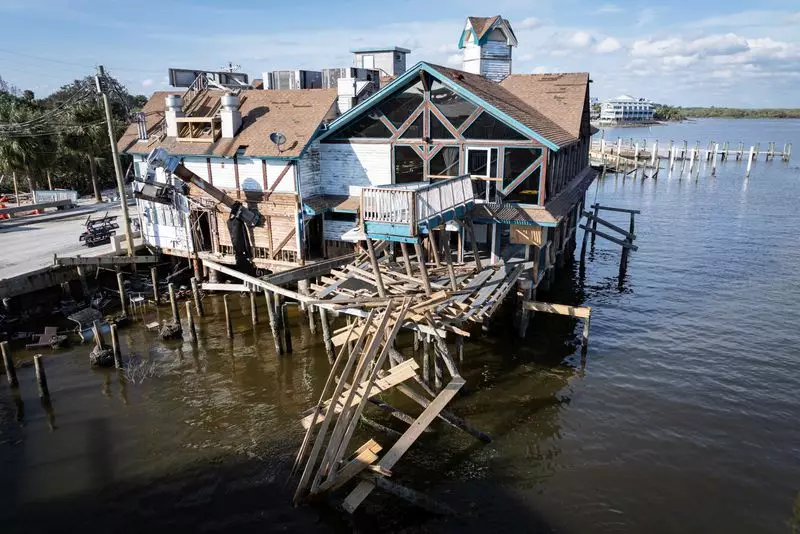The devastation caused by Hurricane Helene has left an indelible mark on the Southeastern United States, triggering an extensive cleanup and recovery operation. The catastrophic storm, which brought torrential rains, fierce winds, and significant storm surges, has resulted in millions losing power and widespread infrastructure damage from Florida to Virginia. This article delves into the immediate effects of the hurricane, ongoing recovery efforts, and the larger implications for the affected communities.
In the wake of Hurricane Helene’s wrath, state officials have mobilized resources to begin the arduous task of recovery. The initial assessments have revealed that at least 60 individuals have lost their lives across several states, including South Carolina, Florida, Georgia, North Carolina, and Virginia, with officials concerned that this figure could rise as search efforts continue. The destruction inflicted upon communities has been severe, prompting estimates of damages that range from a staggering $15 billion to over $100 billion, highlighting the extensive economic fallout from such natural disasters.
Federal Emergency Management Agency (FEMA) Administrator Deanne Criswell has indicated that vital infrastructure such as water systems, communication networks, and transportation routes have suffered significant damage. On CBS’s “Face the Nation,” she emphasized that while the U.S. government possesses the necessary resources to address the catastrophe, the recovery process will be incredibly complex and elongated. The fact that approximately 2.7 million customers remained without power just days after the storm illustrates the enormity of the task at hand.
Florida’s Gulf Coast was one of the regions hardest hit by the storm. Following Helene’s landfall on Thursday night, the region experienced days of relentless rainfall, with some communities facing 15-foot storm surges that obliterated homes and infrastructure. In particular, the small coastal town of Perry reported multiple fatalities and significant property damage. Residents have shared heart-wrenching stories of loss, such as Charlene Huggins, whose family home had been occupied by five generations—her sorrow mingling with memory as she sifted through her possessions swallowed by debris.
The resilience of local communities shines through stories of survival amidst ruin. In coastal Steinhatchee, mobile homes were dislocated by powerful storm surges, while residents of Spring Warrior Fish Camp voiced their frustrations over the lack of immediate aid. Their experiences highlight a stark reality: remote areas often feel forgotten during disaster recovery efforts, emphasizing the critical need for inclusive emergency plans that prioritize all communities.
North Carolina experienced its share of devastation, with mountainous regions witnessing unprecedented rainfall, causing increased flooding. Some areas received nearly 30 inches in a short span, leaving over 400 roads closed statewide. Governor Roy Cooper reported two deaths as the relentless waters overwhelmed infrastructural norms. The imagery emerging from affected towns such as Lake Lure is indeed grim, with uprooted trees and washed-out roads presenting formidable obstacles to recovery.
In adjacent Tennessee, concerns arose regarding the stability of the Nolichucky Dam, underscoring how interconnected ecosystems can complicate disaster responses. While local officials reported stability and security for the dam, the ongoing weather challenges remain daunting for neighboring regions.
As recovery efforts coalesce across the affected states, President Joe Biden asserts a commitment to ensure that all available resources are delegated towards rebuilding these communities effectively. His emphasis on sparing no effort speaks to the larger implications of preparing for such disasters, not just in response but also in shaping policy that prioritizes infrastructure resilience and emergency readiness.
Moreover, as communities grapple with both emotional and material damage, it is imperative to understand the broader implications of such hurricanes. They not only affect immediate losses but can have long-lasting effects on regional economies, social structures, and mental health.
Hurricane Helene has starkly highlighted the vulnerabilities of the Southeastern U.S. to extreme weather events exacerbated by climatic changes. While immediate recovery is a critical focus, policymakers must also consider long-term strategies to mitigate future damages, ensure effective response, and prioritize the needs of all communities—especially those often overlooked in times of crisis. The journey to mend and rebuild is just beginning, but the lessons learned from this disaster must pave the way for a better-prepared future.

